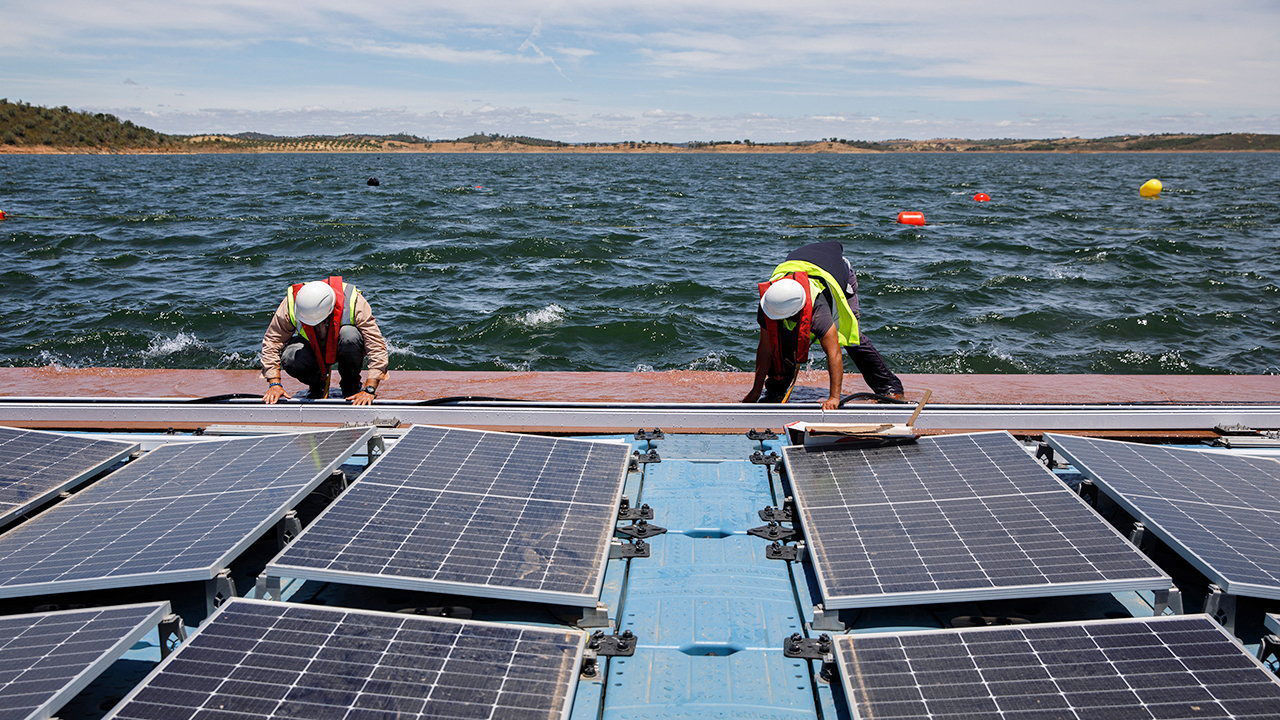
Your browser does not support the <audio> element.
Drive a few hours from Lisbon towards Spain, past the olive farms, and you will arrive at Europe’s largest artificial lake, at the Portuguese town of Alqueva. The first thing that catches the eye is the large hydroelectric dam. But look closer and you will also spot a bright patch of floating glass. It is the floating solar-power plant built by EDP, a Portuguese utility that is one of the world’s biggest developers of renewable energy. Critics have long dismissed such projects as a costly and trouble-prone experiment. The technology, however, is now ready to shine.
In this first phase of the project at Alqueva, engineers have stationed some 12,000 photovoltaic (PV) modules on floating pontoons made from partially recycled plastic and locally sourced cork. These are connected to an energy-storage system incorporating lithium-ion batteries and integrated with the hydroelectric dam’s power station.
Floating solar projects like this one do face plenty of challenges. The kit has to be water-, wave-, wind- and storm-resistant, which adds complexity and cost. When located on salt water, corrosion can be a problem, though inland projects in fresh water fare better. The fish in lakes attract plenty of birds, whose droppings can block the sun. To deal with this, engineers for the project at Alqueva have developed remote-controlled cleaning robots and are working on autonomous ones. “Like a Roomba for the panels,” explains one.
Yet floating solar projects also enjoy several advantages. When they are located at existing hydroelectric dams they do not require any additional land, thus evading NIMBY opposition, and can be connected to the grid without the multi-year wait common for solar projects. The cooling effect of being on water boosts the efficiency of the modules, with studies suggesting gains of between 5% and 15% over land-based PV, while the shade they produce slows the evaporation of the reservoir.
EDP considers floating solar one of its “biggest bets”. The five megawatts (MW) of capacity built in the first phase of its project at Alqueva is, admittedly, tiny. The company, however, is planning a second phase that would add 70MW more by 2025. Wood Mackenzie, a consultancy, reckons the technology could provide 60 gigawatts of renewable-power capacity globally by 2031. That may not seem much next to the 1.6 terawatts of solar capacity installed as of last year. But every bit counts.■
To stay on top of the biggest stories in business and technology, sign up to the Bottom Line, our weekly subscriber-only newsletter.

















